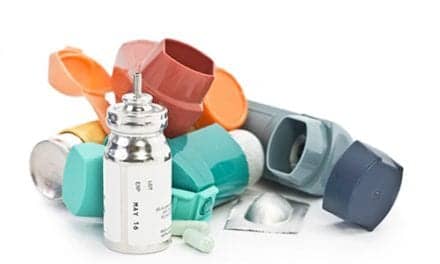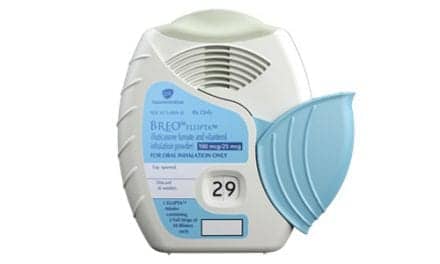
Respiratory therapists working in home care are facing new challenges with the reimbursement changes currently under way. The Medicare Modernization Act (MMA) and the Deficit Reduction Act of 2005 (DRA) will potentially have the most significant effect on the delivery of home medical equipment services in 20 years. The resulting impact for the patient receiving respiratory care equipment and services, and for the respiratory therapist currently providing these services will be wide ranging.
The Early Days
To understand the rationale for these changes, and to more completely understand how respiratory therapy has found itself in its current position, it is appropriate to take a retrospective look at reimbursement for respiratory care and home medical equipment.
The Medicare and Medicaid programs were established as part of President Lyndon Johnson’s “Great Society” in 1964.1 Both programs became operational in 1965. Respiratory therapy was not mentioned either in the legislation establishing these programs or in the regulations developed to implement them. In fact, the term “respiratory therapy” was not even in use in 1964. Inhalation therapy, or possibly oxygen therapy, were the terms commonly used to describe respiratory therapy functions, such as oxygen administration, IPPB, etc. It is also interesting to note that the fledgling profession that we know today had fewer than 5,000 therapists and fewer than 1,000 inhalation therapy departments in hospitals nationwide in 1964.2 There were fewer than 20 educational programs for inhalation therapy at that time. Minimal respiratory therapy equipment for use in the home was available due to the lack of appropriate technology. The oxygen concentrator was not commercially available until the late 1970s.
The Medicare and Medicaid programs became successful beyond the imaginations of any government or health care administrators in the 1960s. Efforts were made almost immediately to curb the annual increases in payments for Medicare and Medicaid. This resulted in the Diagnosis Related Groups (DRG) methodology for Medicare hospital reimbursement in the early 1980s.3 The effect on home medical equipment providers was that patients were discharged from hospitals “sicker and quicker,” requiring additional home health services. The unintended consequence was a sharp increase in home medical equipment (HME) payments for equipment such as oxygen systems. The Health Care Financing Administration (HCFA, now known as the Centers for Medicare and Medicaid Services or CMS) responded with the “Six Point Plan” to regulate the reimbursement of HME.1
The Six Point Plan was approved in 1987 and became effective in 1989. The most significant initiative in the Six Point Plan was that inexpensive items, such as nebulizers, suction machines, and ambulatory aids, became “capped rental” items. This category gave patients the choice to consider the equipment as purchased after 15 months of rental, or to continue as a “capped rental.” Under the “capped rental” choice, the equipment continued to be owned by the HME provider and the provider was responsible for providing service and repair until the equipment was no longer needed. Oxygen equipment was considered a “frequently serviced item” and was rented for the length of medical necessity. The Medicare allowable charge for oxygen equipment was changed to a “device neutral” method at this point, resulting in the same reimbursement amount regardless of the oxygen system being provided (ie, oxygen concentrators, liquid oxygen systems, and oxygen cylinders were all reimbursed at the same amount).
Due to the increase in COPD and other chronic disease states requiring long term oxygen therapy (LTOT), increased longevity of patients using LTOT, and increased availability of this equipment, Medicare payments for oxygen equipment continued to skyrocket in spite of changes in reimbursement. This resulted in a variety of cuts in oxygen reimbursement 13 times between 1987 and 1995.1 Subsequently, the Balanced Budget Act of 1997 reduced oxygen reimbursement by 30% and imposed consumer price index (CPI) freezes that are still in effect today.4
Recent History
In 2005, the CMS continued to struggle with the increasing amounts being paid for oxygen therapy equipment and other HME rentals. The Medicare Modernization Act, which included the Medicare Prescription Drug Plan, is meant to control the further growth of these payments. The Deficit Reduction Act of 2005 is an additional effort to reduce this expense to the federal government.
The DRA was passed by the United States Senate in December 2005 by a vote of 50 in favor and 50 against. The tie vote was broken by Vice President Richard Cheney when he cast his vote in favor of the DRA. The bill then passed the House of Representatives in February 2006 by a vote of 216 in favor and 214 against. President George W. Bush signed the bill into law on February 8, 2006.
The wide-ranging changes resulting from this legislation include competitive acquisition (more commonly known as “competitive bidding”), a Program Advisory and Oversight Committee (PAOC), changes to the oxygen rental structure, and elimination of the capped rental option for HME.
And Now What?
The change that has most threatened the HME industry for several years now is the idea of competitive bidding. Under the MMA, a competitive acquisition authority will be operationalized to replace the current methodology for HME payment.5 CMS’s goal is to establish payment amounts for certain HME and to harness marketplace dynamics. They want to create incentives for suppliers to provide quality products and services efficiently and at a reasonable price. As outlined by CMS, the objectives of the competitive acquisition authority are:
1. Operationalize competitive bidding for HME and determine appropriate prices for categories of HME
2. Protect beneficiary access to quality HME
3. Reduce amount Medicare pays for HME and bring reimbursement more in line with competitive market
4. Limit burden on beneficiaries by reducing out-of-pocket expenses
5. Mitigate proliferation of use of certain items of HMEPOS (Home Medical Equipment, Prosthetics, Orthotics, and Supplies) by contracting with suppliers who engage in a business model that is beneficial for the program and beneficiaries.
The plan to operationalize competitive acquisition will begin in 2007 in 10 of the largest metropolitan statistical areas (MSAs). In 2008, 80 more MSAs will be added, and in 2009, competitive acquisition will be rolled out in all other areas. Some areas, such as rural areas and some low-population density urban areas, might be exempt from competitive acquisition. As of late April, New York City, Los Angeles, and Chicago have been excluded for 2007.
DME providers will submit bids for selected HME products, and CMS will use the bids to establish the Medicare payment for those products. Medicare payments would be the median of the winning bids. It is estimated that the competitive acquisition program will lead to more than $1 billion annual savings for CMS.
The Program Advisory and Oversight Committee is charged with the implementation of competitive acquisition. The PAOC will be responsible for the establishment of financial standards, including standards for smaller providers. The committee will develop the requirements for data collection and proposals for efficient interaction among manufacturers, providers, suppliers, and patients. In addition, the PAOC will be responsible for the establishment of quality standards. These standards will be the basis for mandatory accreditation of DME companies. The PAOC includes several prominent representatives of the HME industry and other related organizations who should represent HME interests and concerns appropriately.
The other change under MMA that will have a significant effect on RTs and the structure of providing respiratory therapy services to patients at home concerns the oxygen rental structure. Previously, oxygen therapy equipment was considered a frequently serviced item and, therefore, was rented for the duration of medical necessity. Under the MMA, the rental period for oxygen therapy equipment will cease at 36 months. At this point, title will be transferred to the patient, and the patient will own the equipment. Medicare will continue to pay for “reasonable and necessary service and maintenance” and for gaseous and liquid oxygen contents. However, none of the specifics of how that reimbursement will occur has been developed at this time. This change was effective January 1, 2006, for current and future patients, resulting in a transfer of ownership of equipment on January 1, 2009, for all patients who were renting equipment as of January 1.
In addition to the changes to the rental structure of oxygen therapy equipment, changes were made to other HME capped rental items. For equipment such as nebulizers, CPAP, wheelchairs, and hospital beds, the rental period has changed from 15 months to 13 months. At the end of the 13-month period, ownership is transferred to the patient. Again, “reasonable and necessary service and maintenance” will be reimbursed, but the instructions on these changes have not yet been released.
Needless to say, these dramatic changes to the reimbursement structure for respiratory and related HME will have a significant effect on the way that respiratory therapy services are provided in the home. The force of the impact will depend on the size of the HME company, the number of oxygen patients, the percent of oxygen business, and the scope of services. In a nationwide survey of HME providers,6 30% reported that more than 50% of their revenue will be affected by the oxygen cap. Obviously, the companies with the larger number or percentage of oxygen patients will need to adapt their operations in order to stay viable and maintain profit margins. Respiratory therapists may see changes to their role in HME companies, such as reduction or elimination of clinical respiratory services, reduced number of home visits, more technology-based service, increased self-dependence by patients, increased use of nonlicensed personnel, and diversification of services by the HME company.
All respiratory therapists should be concerned about these changes because of the effect they will have on services provided to patients. Those RTs who work in home care need to be particularly concerned due to the direct impact on their job. Respiratory therapists need to keep alert as these changes are implemented in order to have a voice in the process and not just be spectators. Ideally, RTs should get involved with the professional organizations that are actively working on this issue, such as the AARC, AAHomecare, and numerous state organizations. An important asset is patient support, since legislators pay attention to constituents, especially the elderly. Just look at the power that the AARP wields! If RTs can get patients to contact their legislators, it will have an impact. Using forums such as COPD support groups to spread the word about these changes will be very effective. Lastly, respiratory therapists must be able to adapt to the changing environment. They are familiar with adapting to change. After all, it occurs almost every day when we change gears to meet competing priorities in patient care. We now need to be able to adapt our work processes in order to meet the needs of our patients and also ensure that our HME companies remain viable to take care of tomorrow’s patients.
David Gourley, RRT, is assistant vice president, regulatory affairs, Chilton Memorial Hospital, Pompton Plains, NJ.
References
1. Wyka KA. Respiratory Care in Alternate Sites. Albany, NY: Delmar Publishers; 1998:228, 235-240,
2. Smith GA, Helmholz HF, Bryant S, Dracum V. Respiratory Care: Evolution of a Profession. Lanexa, Kan: Applied Measurement Professionals;1998:73-76.
3. Lucas J. Home Respiratory Care. Norwalk, Conn: Appleton and Lange;1988:249-254
4. Untied States Congress. House Committee on Commerce. Subcommittee on Health and the Environment. Balanced Budge Act of 1997. Washington: USGPO; 1997.
5. Centers for Medicare and Medicaid Services. DMEPOS quality standards posted for public comment. Available at www.cnms.hhs.gov/CompetitiveAcqforDMEPOS. Accessed June 30, 2006.
6. Home Care Magazine. 2006;29(3).










